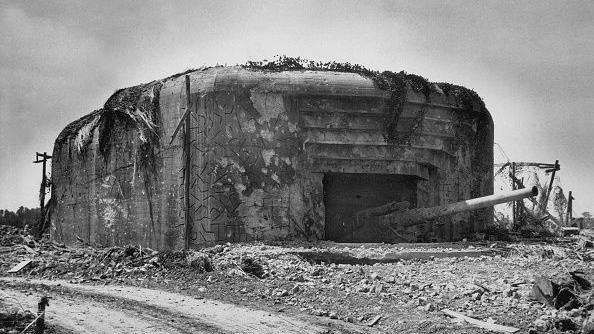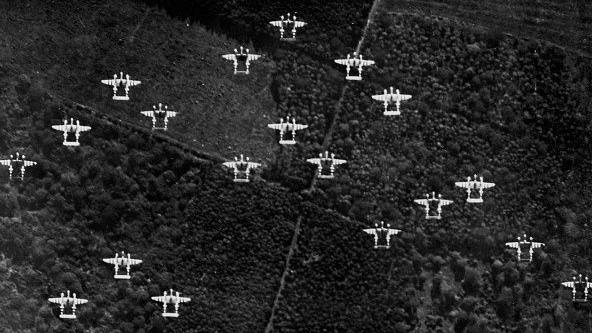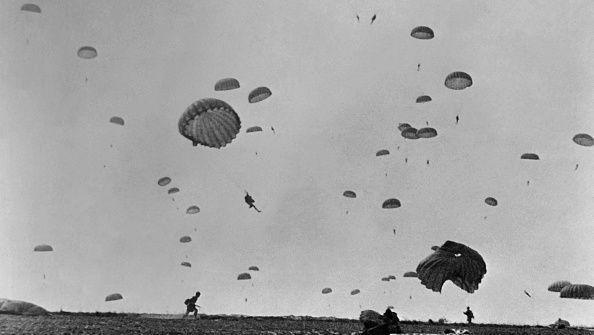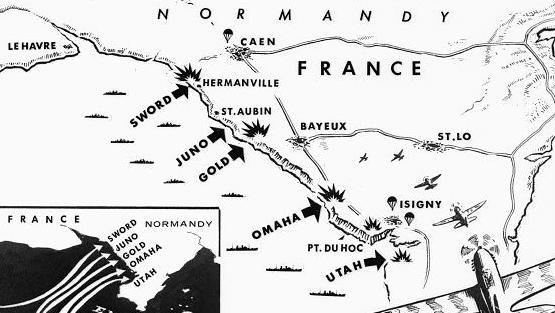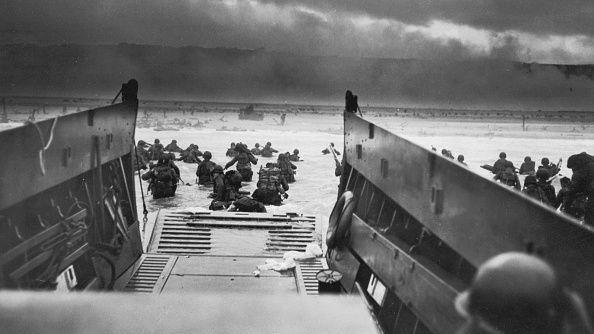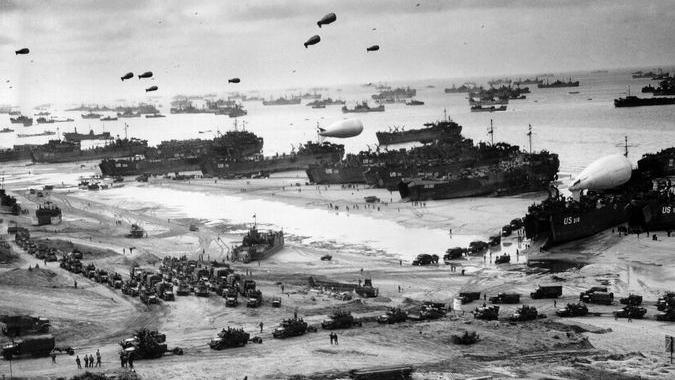What was D-Day and why was it important?
- Image source, IWM/Getty Images

Image caption, What happened on D-Day? Click through this gallery to see how events unfolded.
1 of 7
- Published
It was 1944 and Nazi Germany, led by Adolf Hitler, had invaded and conquered much of Europe.
After five years of war, a plan was created for an attack to help push the German army back.
On 6 June, Allied troops landed on the beaches of Normandy, in what was the biggest sea invasion in history.
It was an important moment during the war and proved to be a key turning point in helping Allied forces defeat Nazi Germany.
Find out more about what happened on D-Day and why it was so significant.
How did World War Two begin?
- Published1 September 2023
Veterans remember D-Day landings. Video, 00:01:01
- Published6 June 2014
What was the Holocaust?
- Published21 January
What was D-Day and the Normandy Landings?

Allied troops trying to get on the beach from landing crafts
The D-Day landings marked the start of the campaign to free north-west Europe from the Germans during World War Two.
A massive military force, made up primarily of British, American and Canadian troops, supported by other countries, set out from the UK towards France.
The whole operation was codenamed Operation Overlord.
Overnight, thousands of ships set out from the south coast of England, supported by more then 11,000 planes.
By the end of the first day, the Allies had landed 156,000 troops ashore, but historians estimate that around 2,500 Allied troops had been killed.
The landings began a campaign that lasted for 11 months and took Allied forces all the way to the heart of Germany. Nazi Germany was defeated and surrendered.
On which beaches in Normandy did the D-Day landings happen?

A news map which shows the location of Utah and Omaha beaches in France. They were the two targets of the American invasion units on D-Day.
The Allied troops landed on beaches along an 80km stretch of the Normandy coastline, in the north of France.
It's not the nearest part of France to the UK, but military experts wanted to surprise the German army, who they believed were expecting an invasion to cross the English channel at its narrowest point.
By making a longer crossing by sea, the soldiers avoided some of the heaviest Nazi coastal defences.
Who took part in D-Day landings?
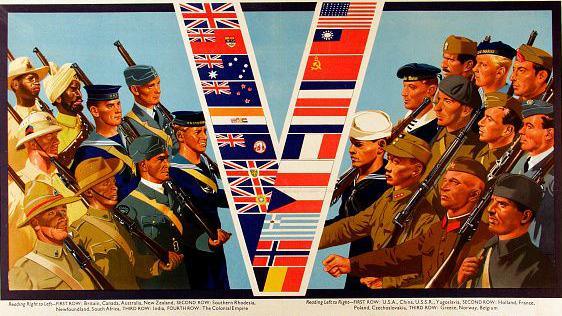
A poster illustrating soldiers from different countries that were part of the Allied forces during World War Two.
The Allied forces who crossed the Channel were made up of soldiers from many countries, including the UK, the USA and Canada, along with troops from Australia, Belgium, Czechoslovakia, France, Greece, the Netherlands, New Zealand, Norway and Poland.
They landed on the beaches of Normandy in France, and started to break through the German army's defences.
Meanwhile in Eastern Europe, the Soviet Union was also pushing German forces back. The Soviet Union was also one of the Allies, and had been fighting the bulk of the German army for the previous three years.
What role did women have on D-Day?
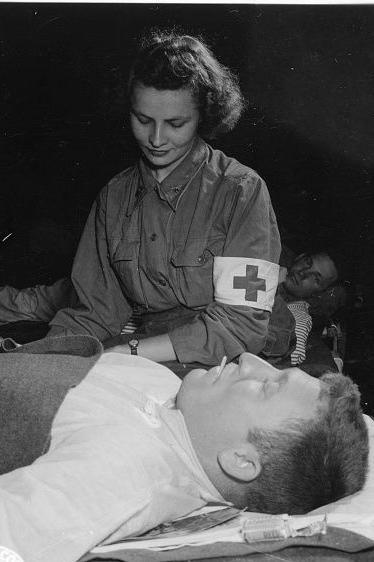
In a field hospital, a nurse treats wounded soldiers
Women also played an important part in the D-Day planning.
From codebreakers, to radio operators, to spies, there were thousands of British women who joined the war effort.
Many nurses from the Allied nations were also sent to Normandy to treat troops on the ground.
They worked in field hospitals and on hospital ships, helping injured soldiers on the frontline, and those shipped back to the UK.
War correspondent Martha Gellhorn smuggled herself onto a hospital ship to get to Normandy, locked herself in a toilet, and became the first woman to report on the invasion.
Why is it called D-Day?
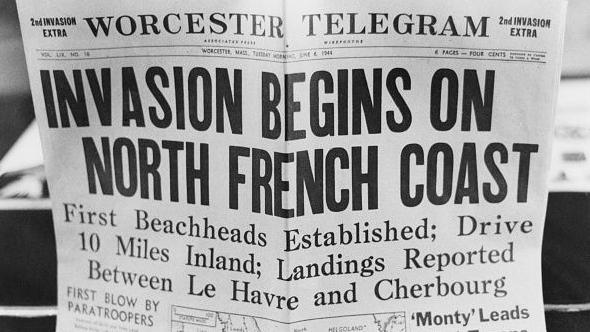
A newspaper reporting the invasion of the French coast of Normandy
The 'D' in D-Day does not stand for anything in particular, it's just a name the military use when planning an event.
The military started planning the details of the invasion before they knew the date when it would take place.
When they would organise things like when the troop ships should leave England, they referred to it as D-Day.
The name D-Day has been used for many military operations, but it is now firmly associated with the Allied invasion of Normandy.
- Published20 May 2024

- Published15 October 2020

- Published29 August 2022


